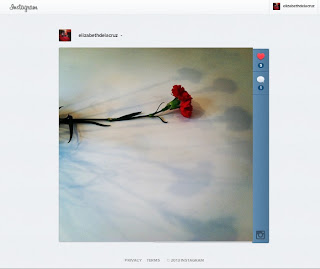A PLN (Personal Learning Network or Professional Learning Network) is a collection of contacts (friends, associates, colleagues, and loose connections) with whom one connects, shares, converses, and learns from. PLNs are nothing new, and educators and artists all have a PLNs. What's new is all the attention PLNs are currently receiving in the ed-biz. PLNs are both real (face-to-face) and virtual (online). This post is about online PLNs. Being online also means that these PLNs utilize social media. There are ample resources online about PLNs (real and virtual), so I'll share my own insights about and experiences with my online PLNs.
PLNs and social media. PLNs and social media go hand in hand, and I fail to see a clear distinction between them. Social media is just that, social. There's an active community on multiple social media sites, or rather, multiple overlapping and constantly changing communities inhabiting these places. Personal Learning Networks are non-hierarchical and self-directed. I engage both my PLNs and social media as means of sharing, connecting, and learning on my own terms. Sometimes I'm all-in (immersing myself in the online environment, learning what I can, and reconnecting with friends and associates). Sometimes I share and participate only intermittently (as time allows and my creative, social, and personal urges dictate). And sometimes, I turn it all off and do other things.
I use social media for creating, sharing, conversing, and learning. I currently maintain accounts (curate content) on several social media sites (mostly Flickr, Facebook, Twitter, Pinterest, Scoop.it, and Instagram). I'm migrating off Delicious after they got rid of stacks. I share and manage (curate) content these sites to focus, annotate, and I recently opened and maintain a paper.li account (to aggregate and publish Tweets of interest to art educators). The headers of my website, Tumblr, and blogsite all provide navigation links to one another, and my other accounts link back to my website. Inter-linking these sites allows me (and others if they are interested) an easy way to move from one to another. My work shared is shaped by what I have learned from others, a considerable amount of which I have learned through my online connections to people whose work I admire (aka, my PLN).
Varying in several ways, my online PLN is a loosely connected, multi-dimensional, and dynamic aggregate of people I know, don't know, follow, talk to, learn from, and with whom I share content using social media. Variations in how I engage with my PLN include the following.
- Time invested - When, how much, and how often I connect to my online PLN; whether my contact is synchronous or asynchronous; and whether it is short term or long term in duration. I have limited time and many interests and projects. Intermittent engagement with various contacts in my PLN and in various sites works for me.
- Relationship to each of my connections - How and how well I know my contacts, where they live, how and why I include these individuals or groups in my PLN, how (or whether) I interact with these contacts. The types of relationships I maintain in my PLN are varied and constantly changing.
- Nature of interaction - My PLN interactions may be casual or focused, planned or unplanned, work-oriented or just for fun. My interactions include my own content sharing, liking others' content, commenting, asking questions, direct messaging, reposting someone's content to my audiences, and (to a lesser degree for me) planning or collaborating with folks. Oftentimes I am just observing (lurking) and learning from what others are sharing online.
- Purpose - My motivation for doing all of this includes staying informed about initiatives and professional practices, staying connected to individuals and groups that I value, looking for help or feedback on something specific I am doing, collaborating on a project, advocacy, self-promotion, and fun.
I often interact in Twitter using an app called Tweetdeck.
One day in February while perusing my Tweetdeck #iphoneography hashtag column, an image caught my eye.
Wanting to know more, I followed the creator’s link back to her twitter account and followed her there.
I noticed after clicking on the image that had appeared in Tweetdeck that the photographer had uploaded this image with Instagram.
So I followed her tweeted link back to his Instagram site, and "hearted" (liked) the image. ...noticing also that the image was cross posted to his Flickr account.
The link from her Instagram page took me to his Flickr site. After viewing some photos, I added this individual as a Flickr contact and favorited some of her images in Flickr.
I can now see and comment on her photographs in Twitter, Instagram, and Flickr. In studying her images, I am getting new ideas for my own cellphone photography.
I am intrigued by the dynamics of PLNs and social media. I like that I control when, where, how, how much and with whom I interact in social media sites. I find the links to networks of individuals to be strong and relatively stable by virtue of their association with highly popular social media sites, but my association with any one individual or site at any given time is loose and unpredictable. I am as much of an observer as I am a commentator or content creator, and I spend most of my time in transit. There are some pretty interesting writings about networking theory to consider, but that's another topic, so I'll close with two observations: I like the space between the nodes (using network-theory-lingo), and the benefits of building and interacting within my PLN has exceeded the amount of time I've invested.







